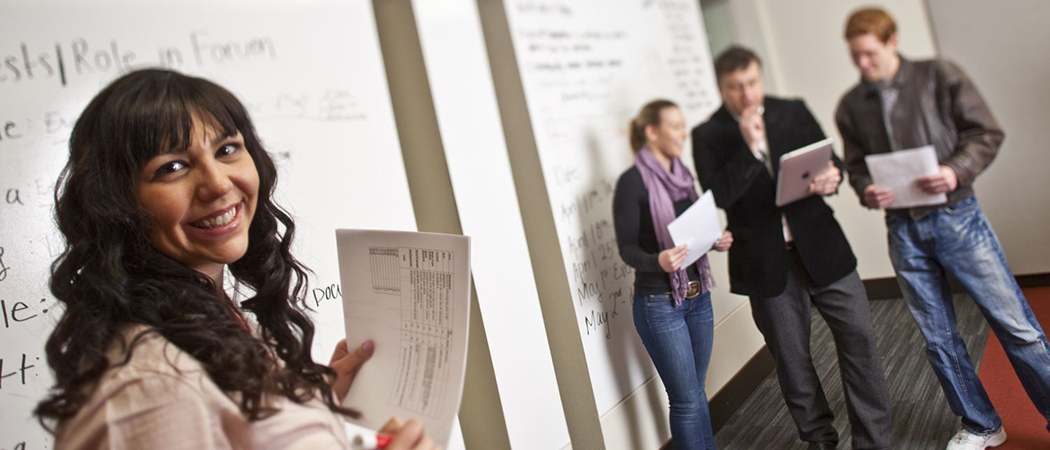Every "research gem" about smooth muscles fascinates doctoral candidate Scott Barnett, but he knows the reams of information available on the topic aren't at the top of everyone's reading list. Understanding this, he says, is at the core of what he appreciates most about the University of Nevada, Reno's Three Minute Thesis at Nevada competition, known as 3MT.
"Where the 3MT sets itself apart is that it forces you to discover the core essence of your research, the absolute essence of what you are doing," Barnett, who is pursuing a PhD in cellular and molecular pharmacology and physiology and placed second in last year's competition, said. "You have three minutes and you need to not just explain it, but to keep people interested. It really teaches you a lot about your own research."
The second annual 3MT saw 32 graduate students compete in the preliminary round March 2-4. The finals event is Thursday, April 23, in the Mathewson-IGT Knowledge Center, Wells Fargo Auditorium, with a reception and music by the Nightingale String Quartet at 6:15 p.m. followed by the competition at 7 p.m. The thirteen finalists include six in the PhD competition, three in the master's competition and four in the professional project competition. They have three minutes to present their abstract or professional-project overview, and can use only one presentation slide. A panel of judges evaluates the presentations based on two categories of criteria: first, comprehension and content and, second, engagement and communication.
"The competition definitely contributes to all who participate, whether they move on to the finals or not," David Zeh, vice provost for graduate education and dean of the Graduate School, said. "It encourages focused thought on the significance of their work. As they move on in their careers, they will need to convey the appeal or impact of their work in interviews, business meetings or presentations. This helps them prepare."
"As scientists, we're taught to be really good at something really important, but we're not taught to communicate," Barnett said. "The ability to communicate is almost as important as the research itself."
Zeh initiated 3MT on the suggestion of a faculty member who heard about the program at the University of Queensland. In its first two years, Zeh has seen good involvement from graduate students in science and engineering. He hopes to see participation grow in the future and broaden to include more participation from other colleges.
"It should be highly encouraged," Barnett said. "We all need to develop those skills."
Barnett's 2014 presentation, "The Amazing and Confusing Uterus," summarized his research exploring the connection between smooth muscle reflex and pre-term labor. He conducts his work in the lab of Iain Buxton, University of Nevada School of Medicine professor of pharmacology, where, as Barnett said, they are "working hard to understand the problem of pre-term labor and develop a potential therapeutic."
"We as student scientists are in a unique position to explain what science is and bring it to a level that a scientifically curious lay person can better understand," Barnett said of the project.












